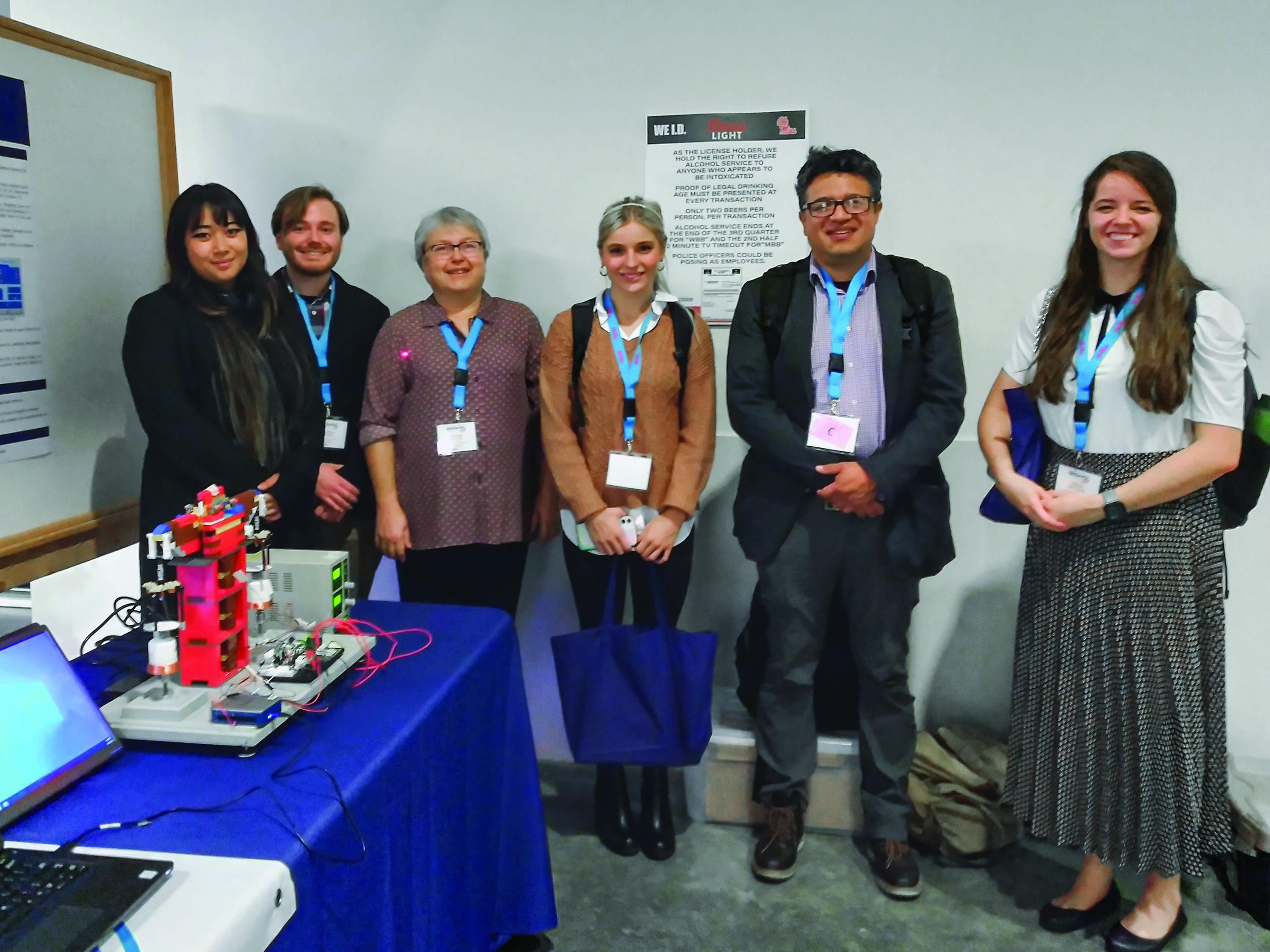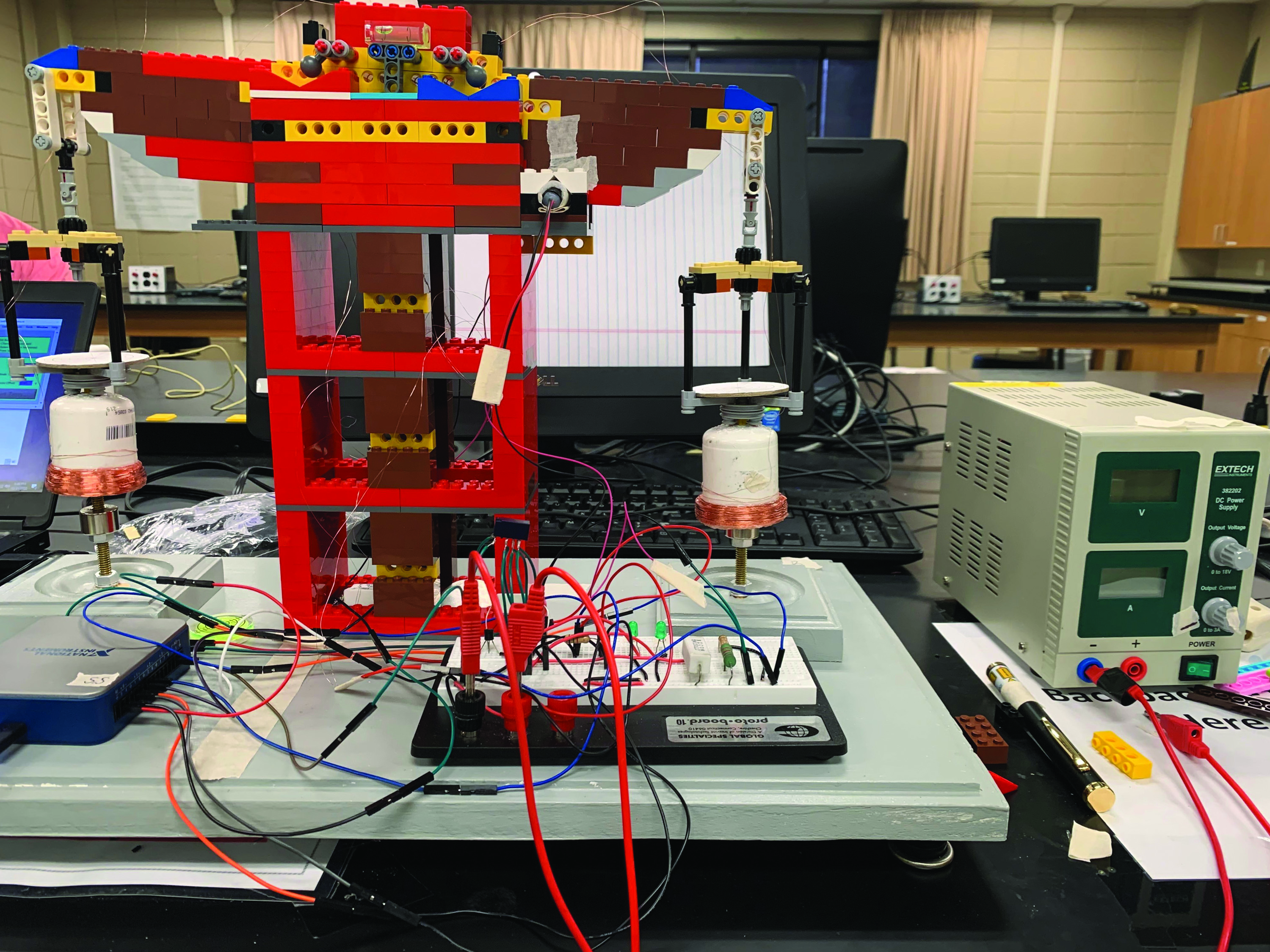Legos, Metrology, and Planck's Constant
Winter
2024
SPS Chapters on Hands-on Projects
Legos, Metrology, and Planck's Constant
Modeling an apparatus that helped redefine the kilogram
By:Ivy Cartwright, Former SPS Chapter President, with Tatiana Allen, SPS Chapter Advisor, University of Tennessee at Chattanooga
After the COVID-19 lull, our SPS chapter at the University of Tennessee at Chattanooga sought a project to bring us together. We were lucky enough to find one that involved LEGOs! While we resumed pre-COVID routines and chapter activities in 2021, we wrote an SPS Chapter Research Award proposal requesting funding to construct a LEGO-based model of a Kibble balance, also known as a Watt balance.
A Kibble balance, named after its inventor, Bryan Kibble, measures the downward gravitational force on a mass by counteracting it with an upward electromagnetic force. The machine toggles between two measurement modes and indirectly equates electrical power and mechanical power, hence its other name, the Watt balance.
The balance is an integral part of a machine built by the National Institute of Standards and Technology (NIST) to redefine the kilogram, a base unit in the International System of Units (SI). The kilogram used to be defined as the mass of a specific metal cylinder kept under controlled conditions but is now based on a fundamental physical constant, the Planck constant. With this new method, the kilogram can be realized with an astonishing accuracy of about three-millionths of a percent. The complicated machine is kept under clean-room conditions, takes measurements at helium temperatures, and costs several millions of dollars.
In an effort to inspire interest in metrology and increase outreach opportunities for undergraduate students, NIST researchers built a LEGO-based model of the Kibble balance—a much simpler version of the real thing. Our goal was to construct a replica based on NIST’s instructions.
Our chapter received a $2,000 award from SPS to buy materials for the project. As we put it together, we learned more about many areas of physics and metrology, improved our experimental skills, and grew stronger as a team. We have successfully used our new balance, controlled by LABVIEW software provided by NIST, in two ways—to measure a microscopic mass and to determine the value of Planck’s constant.
The project was a wonderful learning experience and community-building activity for our chapter. After a period of remote learning, we were thrilled to meet in person regularly. We also benefited from working with several professors in our department—our chapter vice president even did summer research with a professor he met while completing this project.
Working on the Kibble balance also increased interest in and support for our SPS chapter. We more than doubled our membership, recruiting students from physics and other majors. The Department of Chemistry and Physics helped send SPS members to two conferences and our regional SPS zone meeting to present this project, and it gave us $1,000 toward purchasing a more powerful computer to control the LEGO model.
The model continues to inspire our chapter. A former SPS member and physics alum helped us design 3D-printed parts that improved the appearance and accuracy of our Kibble balance considerably. We’ve also interacted with NIST scientists and other members of the professional community because of this project, experiences that have been invaluable for our members.
And we’re planning to use our LEGO model in physics outreach activities with local schools and our community.
We learned so much by constructing this LEGO-based model of a Kibble balance—the first one in the Southeast. We have truly grown as an SPS chapter and are actively looking for our next (possibly LEGO-based?) science project.
Get Money for SPS Chapter Research Projects
SPS Chapter Research Awards provide up to $2,000 for physics research projects deemed imaginative and likely to contribute to the strengthening of the SPS program. Applications are due November 15 each year.
For details, visit spsnational.org/awards/chapter-research.


